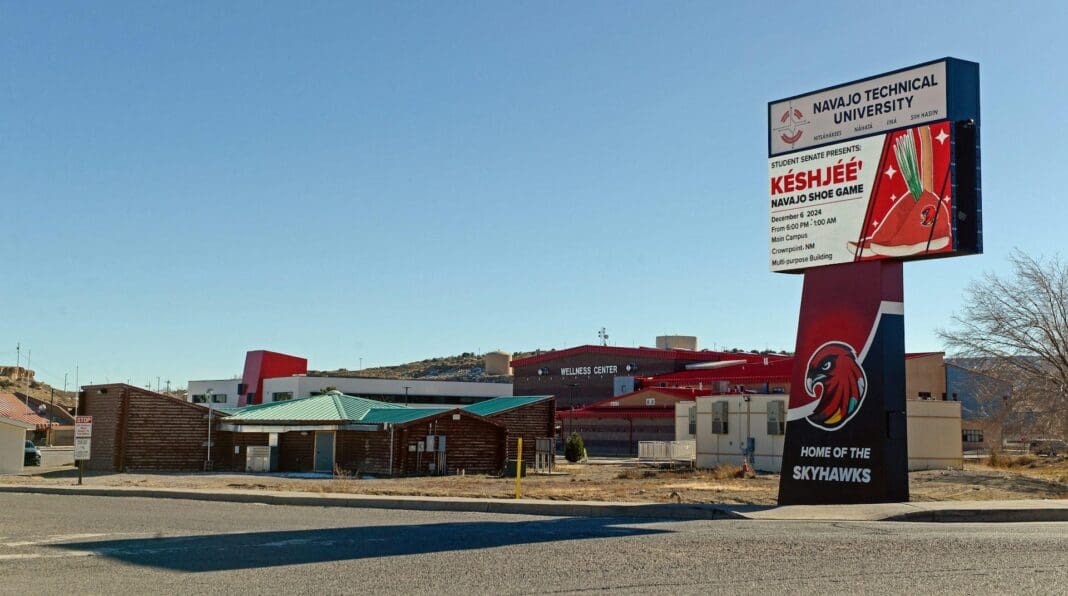Most Native American high school students do not attend or graduate from college.
As a tribal member of Spirit Lake Nation in North Dakota and the former president of Cankdeska Cikana Community College in Fort Totten, North Dakota, I recognize the difference that tribal colleges and universities, like the one I used to work at, can have in rerouting Native students’ education journeys.
Tribal colleges and universities, or TCUs, are public institutions that are founded and run by a Native American tribe and focus on serving Native American students and communities.
The approximately 3.9 million Native Americans living in the U.S. have long recognized that TCUs are unique institutions that help Native students succeed in school and earn higher education degrees.
Most Americans, though, have no idea that tribal colleges and universities even exist, let alone know how they work.
TCUs enroll approximately 30,000 students each year, including some non-Native students. The median annual tuition at TCUs is US$3,572, making them more affordable than most other public universities.
There are 35 accredited TCUs across 13 states, including Montana, Arizona, Oklahoma, North Dakota and South Dakota. All of these schools are nonprofits.
While a single Native tribe sometimes sets up a tribal college, in other cases a consortium of tribes or the federal government helps establish a school.
Despite their differences, tribal colleges and universities all have the same mission of teaching Indigenous history, culture and languages.
All the tribal colleges also offer associate degrees and certifications. Twenty-two of them have only baccalaureate programs, and nine have master’s programs. Navajo Technical University, a tribal college in Crownpoint, New Mexico, which has the largest enrollment size of all the TCUs, began offering a first of its kind doctorate program in Diné Studies in 2024. This program focuses on the language, culture and history of the Diné people, also known as Navajo people.
Affordability has always been a consideration when TCUs set tuition and fees, since most are located on rural American Indian reservations with high unemployment and poverty rates, as well as few available jobs.
TCUs keep their tuition relatively low in part because a majority of their funding comes from the federal government. They also receive funding from philanthropic organizations.
TCUs also generally have minimal overhead costs, since most students live off-campus and only a handful of these colleges and universities offer on-campus housing. Most TCUs have both in-person and online courses.
While there is no single profile of a TCU student, I found that it is common to encounter a 30-year-old, single mother who works full time while trying to earn a college degree.
In 1968, just 181 Native Americans graduated from a four-year college.
That same year, the Navajo Nation established the first tribal college, then called the Navajo Community College, in Tsaile, Arizona. This school is now called Diné College.
Several factors prevented most Native American students from attending a college or university.
The cost of college was prohibitive, and many Native American students were also not adequately prepared for college in high school. These students and their families also feared that higher education could force them to assimilate into Western and white culture, and erase their own Native traditions and languages.
When considering this historical context, it is important to understand that Native Americans have a unique relationship with the federal government.
Native Americans largely consider this relationship a political one, bound by the various legal precedents, federal policies and executive orders from the 1800s and onward. These orders and policies from the past several hundred years vary, but they often focus on questions of land, assimilation and the political independence of Native tribes.
There are also treaties and orders that focus on education and spell out the federal government’s responsibility to help coordinate and give money to support tribal education.
In 1978, Congress approved the Tribally Controlled Community College Assistance Act, which recognized tribal colleges as higher education institutions and established that the federal government would regularly help fund these schools.
Alongside the creation of new tribal colleges and universities over the past several decades, more and more Native people living on reservations have graduated from high school and received higher education degrees.
The percentage of Native college graduates rose 125% from 1990 to 2020. While 4.5% of Native students living on reservations received a college degree in 1990, that percentage rose to 10.3% with at least a college degree in 2020, according to findings by Harvard Kennedy School in September 2025.
Yet, unlike the high school trends, Native people still graduate college at a much lower rate than the general American population.
In 1990, 20.3% of all Americans had at least a college degree. In 2020, 34.3% of Americans had a college degree at a minimum, according to the Harvard Kennedy School findings.
While tribal colleges and universities receive state and federal funding, they are chronically underfunded and often operate in survival mode. In some cases, they lack money to make needed repairs on campus buildings.
One major reason for this shortfall: While Congress agreed in the late 1970s to annually give tribal colleges $8,000 for each Native student they enroll, it has not met this financial and political commitment.
Tribal colleges annually receive $250 million less than what the federal government promised them, a 2024 ProPublica investigation found.
Tribal college and universities’ futures were cast in doubt in the spring of 2025, when the Trump administration announced a proposal to cut the Bureau of Indian Education’s annual budget from $183 million to $22 million. The Bureau of Indian Education is part of the Department of the Interior and oversees education for Native students.
But the Department of Education went on to announce in September that it would make a one-time, $495 million investment in historically Black colleges and universities and TCUs.
TCU leaders say they are still trying to understand the significance of this funding announcement and what it will result in.
I think it is important to recognize that TCUs make broad contributions to society, well beyond the impact they have on individual students.
TCUs teach entrepreneurship and business development and serve as pilot sites in launching businesses, for example.
For every federal dollar invested in tribal colleges, the schools return $1.60 in tax revenue through the increased tax payments of their alumni and their alumni’s employers, according to a September 2025 report by the American Indian Higher Education Consortium, a national organization that represents TCUs.
TCU alumni also generated $3.8 billion in added income, or gross domestic product, to the national economy from October 2022 through September 2023.
These schools offer a unique pathway for Native students to attend a higher education institution, while teaching them the skills they need to build a stable career.
This article is republished from The Conversation, a nonprofit, independent news organization bringing you facts and trustworthy analysis to help you make sense of our complex world. It was written by: Cynthia Lindquist, University of North Dakota
Read more: A fragmented legal system and threat of deportation are pushing higher education out of reach for many undocumented students Trump isn’t cutting Pell Grants, after all − but other changes could complicate financial aid for some students American Indians forced to attend boarding schools as children are more likely to be in poor health as adults
I served as President of Cankdeska Cikana Community College (CCCC) one of the 34 tribal colleges located in North Dakota and that is affiliated with AIHEC. I am a member of the Spirit Lake Dakota Tribe who chartered CCCC in the 1970s. As a tribal college President, I served on the AIHEC Board of Directors and its Executive Committee. 














